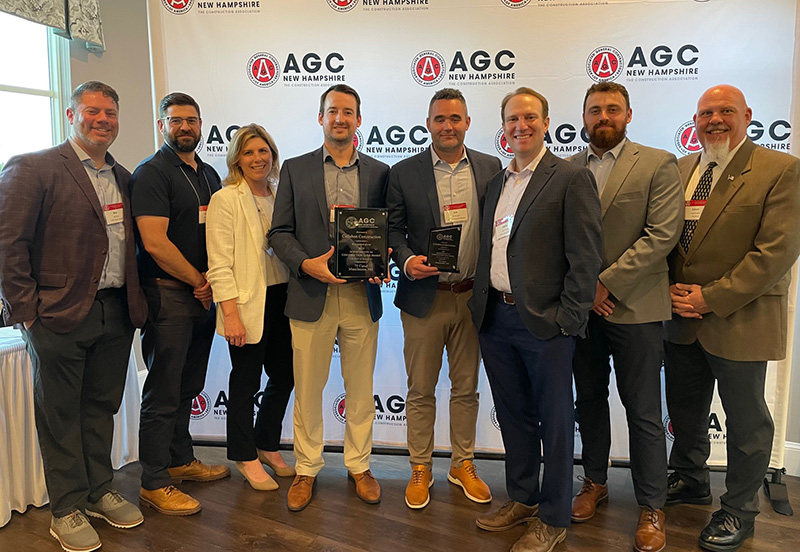Neurodiversity should be a consideration in office design in the “new normal” - by Krista Manna

As business owners look to returning to a more in-person work environment, the returning workforce will have different expectations and different concerns than might have been vocalized prior to 2020. It’s not surprising to consider that employees will have a range of concerns about returning to an in-office environment. And employers will do well to be sensitive to and supportive of these concerns.
Neurodiversity is an issue which should be of top concern to employers as they welcome their teams back into the office setting. Statistics point to one out of every seven people having some level of neurodiversity, and many who do have the condition have not been diagnosed. The chances are that in any office with 10 or more employees, at least one person will be neurodiverse – and this individual may not even be aware of his/her condition.
Neurodiversity is a term which includes individuals with ADHD, Autism, Dyspraxia, Dyslexia, Dysgraphia, and Tourette’s Syndrome. These descriptive labels help explain the diverse ways in which people think, learn, process and behave.
ADHD and dyslexia are two most common types of neurodiversity which are fairly prevalent in the workforce. And it is in everyone’s best interest – employers and employees – to have workplaces that are neurodiverse-friendly.
In general, neurodiverse individuals are good at patterns, problem solving and often with verbal communication. For the dyslexic workforce, they may have problems with reading the printed word, and in processing information in their short term memories. In laying out or redesigning an office, a space with lots of background noise would be distracting. This type of employee needs space that is quieter and has a scaled back look (i.e., not a busy pattern or design of wallpaper). Designs should include simple patterned or geometric surfaces.
The ADHD worker often lacks the ability to control impulses and attention and may appear to be “fidgeting” in the workforce. That said, these individuals can be hyper-focused under the right conditions. They can be resilient and work well under pressure. These traits in neurodiverse employees can help a business be much more efficient.
HP has been a leader in hiring the neurodiverse, citing some impressive results of neurodiverse individuals being up to 30% more efficient. HP, in fact has a program in place for hiring neurodiverse individuals who are on the spectrum.
The Harvard Business Review in an 2017 article addressed the competitive advantage that hiring neurodiverse workers can provide.
What should employers keep in mind to accommodate this important segment of the population?
In workspace design, it’s worth keeping in mind that intermittent, unpredictable noise can often be the number one concern. The ways to compensate for this distraction can include adding acoustic sound dampening, providing individualized offices (including the so-called “phone booth” options for someone who needs to be alone in a more isolated setting from time to time), and setting policies to limit communications tools to avoid digital distractions.
To address sensory cues, individualized controls on lighting and air flow can help – as can building out spaces to accommodate the differences in work requirements. Some neurodiverse individuals may require sensory stimulation such as break-out areas, whereas others do not. A design that accommodates both is a good bet.
Workplace design should also take into account that neurodiverse individuals thrive on repetition, predictability and require clear boundaries to feel safe. Overall, the space layout must make sense. There should be clear lines of sight, clear and repetitive signage, and use of appropriate and varying light levels to help direct wayfinding.
The use of color in design is important too. The color red can be a stimulator which can energize. Green, by contrast, evokes feelings of tranquility and can help reduce stress. Yellow is associated with positive and creative thinking and can be an energizing factor. The proper selection of color can have a positive impact in creating an optimal workspace.
It’s important to remember that the neurodiverse community is not monolithic in its needs. Some may need background noise to function efficiently, whereas others prefer a quieter environment. This need not be a builder’s “nightmare,” because of such items as sound canceling headphones. For businesses and retail environments, working hand in hand with the HR team is a good way forward. In general, designers of office space should create a variety of spaces to accommodate a variety of individual working styles. In addition to the “phone booth” or individualized rooms, have a collaboration room where the team can come together for meetings in person and still have the quiet space needed at other times.
There are many considerations that go into designing office space: ergonomics and ADA considerations for example. These of course still apply. When it comes to accommodating the needs of neurodiverse individuals, the design issues are more nuanced, but still every bit as important. At a time when there is still some anxiety for individuals over returning to an in-person workforce, and at a time when there is competition to attract and retain the best workers, being neurodiverse-accommodating is not only the right thing to do; it makes good business sense as well.
Krista Manna is the owner of KR Architecture & Interiors, Abington, Mass.
Nobis Group awards Robinson and Moreira STEM scholarships


Careers in Construction Month focus on training and safety - by Joe Camilo

The rise of incubators and co-working spaces: The latest in life sciences - by Matt Combs

Ask the Electrician: Is summer a prime time for commercial electrical maintenance?








.png)